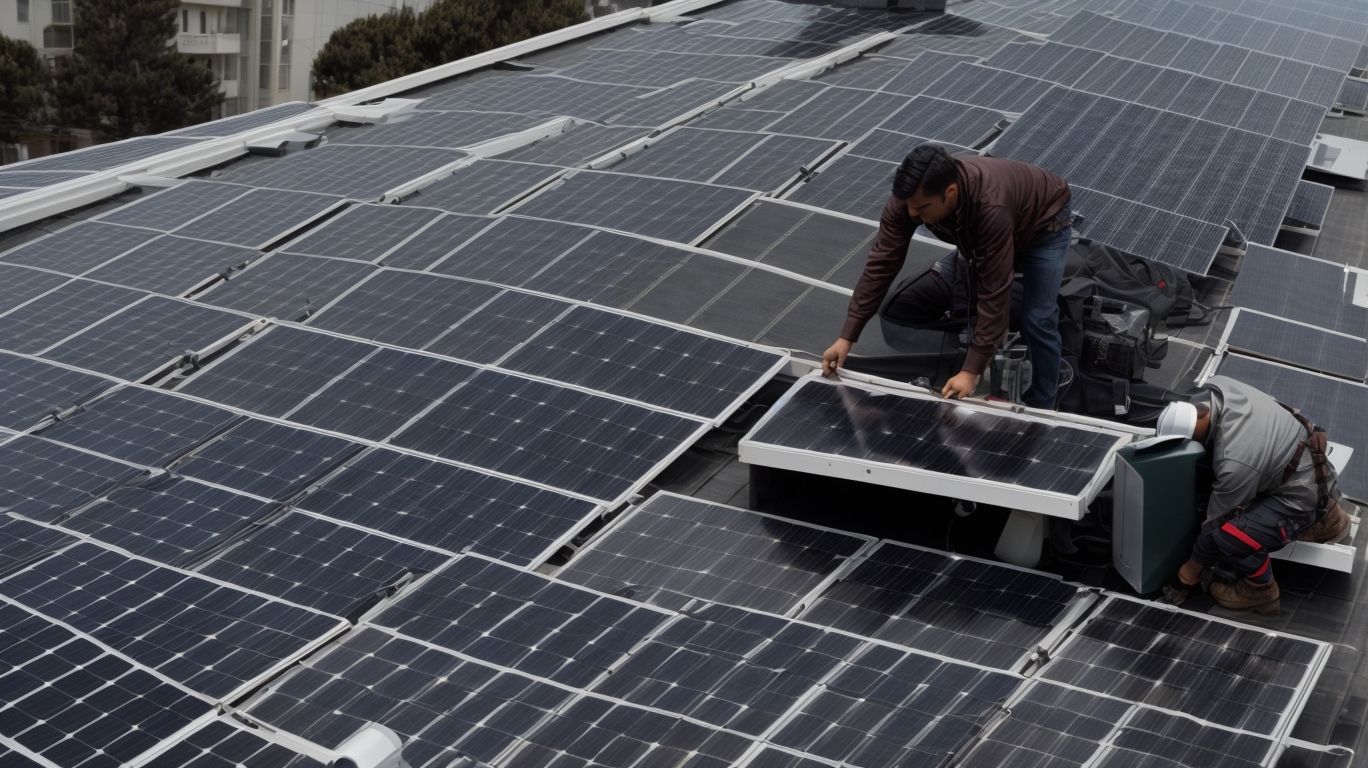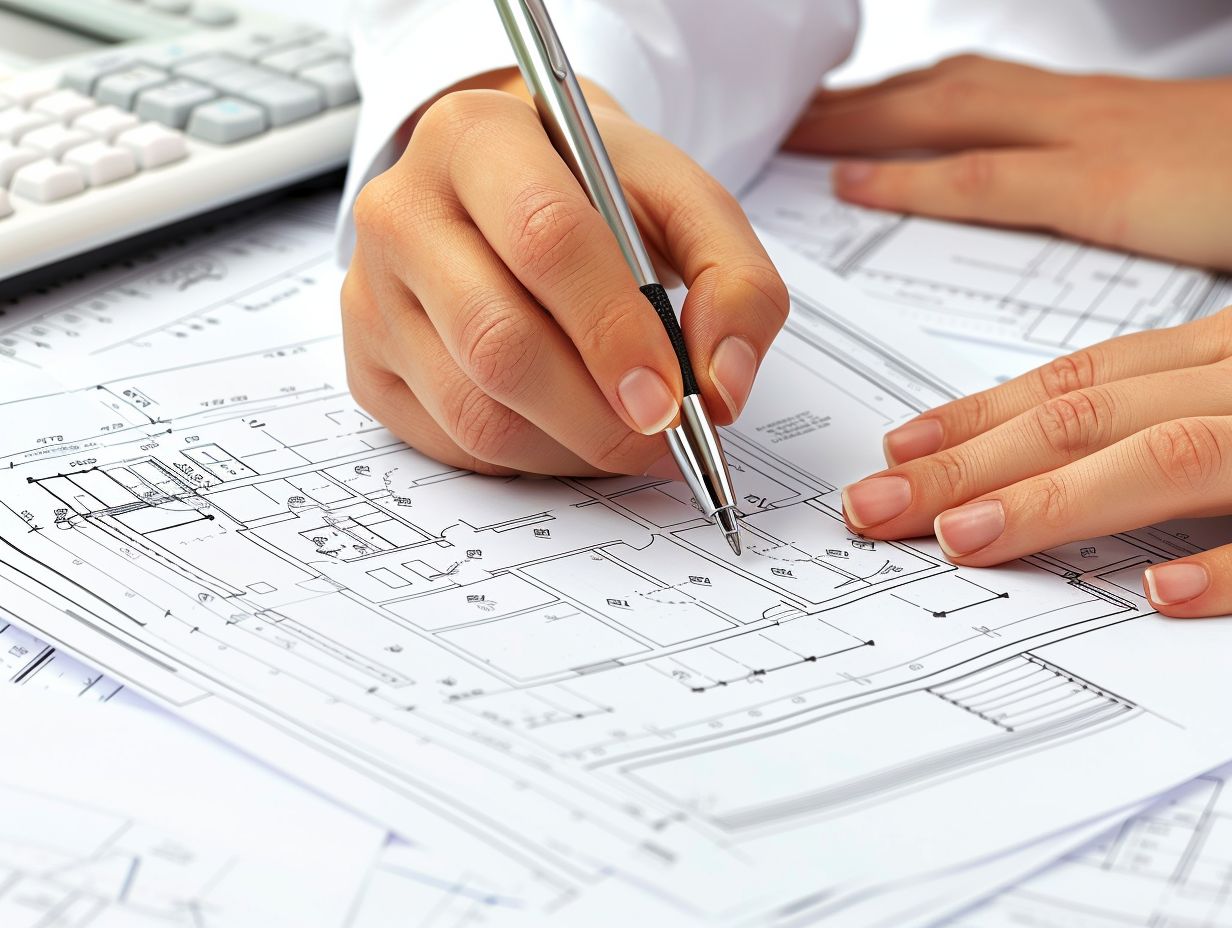
Structural Engineering for Solar Panels in SF: Ensuring Safe Installation
Structural engineering plays a crucial role in ensuring the safe and efficient installation of solar panels in San Francisco. As the demand for sustainable energy solutions continues to rise, the structural integrity of solar panel systems has become a focal point for engineers, builders, and regulators.
In this comprehensive guide, we will delve into the fundamental concepts of structural engineering and solar panels, explore the workings of solar panel technology, and examine the critical importance of structural engineering in the context of San Francisco’s unique architectural landscape. We will also highlight the building codes and regulations governing solar panel installations in SF, as well as the potential risks associated with improperly installed panels.
We will outline the essential steps for safe installation, maintenance, and safety measures to ensure the longevity and reliability of solar panel systems in the dynamic environment of San Francisco. Whether you are a homeowner, contractor, or industry professional, this article aims to provide valuable insights into the intricate relationship between structural engineering and solar panels, ultimately contributing to the advancement of sustainable energy solutions in San Francisco.
What Is Structural Engineering?
Structural engineering involves the analysis, design, and construction of buildings and other structures to ensure their safety, integrity, and compliance with building codes and regulations.
This field encompasses a broad range of considerations, including the selection of appropriate materials, evaluating seismic and wind loads, and ensuring that the structures are resilient and able to withstand various environmental and dynamic forces. The analysis process involves assessing the structural integrity through mathematical models, while design considerations encompass incorporating safety factors, load paths, and stability requirements.
Construction methods play a crucial role in executing the engineered designs accurately and efficiently. Professional engineering practices guide the entire process, emphasizing the ethical and technical standards essential to delivering safe and sustainable structures.
What Are Solar Panels?
Solar panels are devices that capture sunlight and convert it into electrical energy, providing a sustainable and renewable source of power for various applications.
They play a crucial role in harnessing solar energy, enabling the generation of electricity without producing greenhouse gas emissions. The design of solar panels has evolved significantly over the years, with advancements in materials and technologies leading to improved efficiency and cost-effectiveness. The process of installation and operation of solar panels has also become more streamlined, making them an accessible and viable option for both residential and commercial use.
The continuous innovation in solar panel technology contributes to the growth of renewable energy resources and the transition towards a more sustainable future.
How Do Solar Panels Work?
Solar panels work by capturing sunlight through photovoltaic cells, generating direct current (DC) electricity, which is then converted into alternating current (AC) for various applications.
This process involves the solar panels being positioned and angled to maximize sunlight exposure, with considerations for shading, orientation, and tilt angle. The panels are typically installed in an array layout, allowing for efficient energy production.
The structural components, such as mounting racks and frames, provide support and stability, while electrical integration includes connecting the panels to inverters, which convert the DC electricity into usable AC power for homes, businesses, and the grid. The operational process of solar panels encompasses various elements that contribute to sustainable energy generation.
Why is Structural Engineering Important for Solar Panels in SF?
Structural engineering is crucial for solar panels in SF to ensure the safe and reliable installation of support structures, framework, and foundation, considering seismic considerations and the advancements in solar technology.
It plays a fundamental role in analyzing the environmental and load conditions to determine the appropriate design and placement of solar panel support systems. The expertise of structural engineers is essential in addressing challenges posed by seismic activities, ensuring that the solar panels can withstand potential tremors and earthquakes.
With the rapidly evolving solar technology, structural engineers continually adapt their designs to accommodate the changes in panel sizes, weights, and configurations, ensuring the longevity and efficiency of the solar power systems.
What Are the Building Codes and Regulations for Solar Panel Installation in SF?
The installation of solar panels in SF is subject to strict building codes and regulations, requiring compliance with structural safety standards, permits, and utility interconnection guidelines.
These regulations are essential to ensure the safety and effectiveness of solar installations. Structural safety standards dictate that solar panels must be securely mounted to withstand weather conditions and potential stress. Obtaining the necessary permits is crucial for legal compliance and quality assurance.
Utility interconnection guidelines govern the connection of solar panels to the electrical grid, ensuring seamless integration and efficient energy transfer. Adhering to these codes and regulations promotes sustainable energy practices and protects both the environment and public safety.
What Are the Risks of Improperly Installed Solar Panels?
Improperly installed solar panels pose significant risks, including structural instability, fire hazards, and electrical issues, underscoring the critical importance of installation safety.
Structural instability due to improper installation can lead to the collapse of solar panels, posing dangers to people and property below. Fire hazards could arise from faulty electrical connections or inadequate grounding, potentially causing devastating fires. Electrical issues, such as wiring faults, could result in electric shocks and short circuits. Therefore, ensuring that solar panels are installed correctly by certified professionals is imperative to mitigate these risks and maintain the safety and efficiency of solar energy systems.
Structural Instability
Structural instability in solar panel installations can result from inadequate risk assessment, compromised load capacity, or insufficient engineering expertise, posing significant safety concerns.
This underscores the importance of conducting thorough risk assessments to identify potential vulnerabilities such as weather extremes or subpar material quality. It’s crucial to consider the load capacity of the supporting structures, ensuring they can withstand environmental stresses and dynamic loads.
Engaging qualified engineering expertise throughout the project lifecycle is paramount for designing and constructing robust solar panel installations, ultimately promoting longevity and reliability in renewable energy systems.
Fire Hazards
The improper installation of solar panels can lead to fire hazards, necessitating stringent fire safety precautions, materials testing, and durable solar panel designs to mitigate such risks.
This is a critical concern as faulty wiring, improper grounding, or subpar materials can increase the risk of electrical fires. It is essential for solar panel manufacturers and installers to adhere to industry standards and regulations to ensure the safe and effective functioning of solar energy systems.
Robust fire safety measures, thorough materials testing, and durable design elements are crucial for preventing potential fire incidents and safeguarding both property and lives.
Electrical Issues
Improper electrical integration in solar panel installations can lead to various electrical issues, impacting grid connection and the overall performance of solar panels, necessitating meticulous attention to this critical aspect.
Grid connection challenges may arise when the electrical integration is not carried out with precision, potentially leading to disruptions in the flow of solar-generated electricity to the grid. Performance implications could manifest in reduced energy output or even system failures due to inadequate electrical integration. Hence, ensuring that proper electrical connections and compatibility with the existing grid infrastructure is crucial for the seamless functioning and efficiency of solar panel installations.
What Are the Steps for Safe Installation of Solar Panels in SF?
The safe installation of solar panels in SF entails thorough site assessment, meticulous structural analysis, adherence to permitting requirements, and a comprehensive installation process to ensure regulatory compliance and safety.
This process typically begins with a detailed site assessment to evaluate factors such as sun exposure, shading, and roof orientation. Following this, a careful structural analysis is conducted to determine the load-bearing capacity of the installation area. Once the necessary permits are obtained, the installation process involves precise mounting and electrical connections, with a focus on safety and efficiency. Following these essential steps is crucial in achieving a successful and compliant solar panel installation in SF.
Site Assessment and Planning
The initial phase of safe solar panel installation in SF involves site assessment and planning, encompassing considerations such as optimal tilt angle, orientation, and the suitability of rooftop or ground-mounted installations.
This crucial step ensures that the solar panels are positioned to maximize exposure to sunlight, therefore optimizing energy production. A detailed assessment helps determine whether a rooftop installation is viable based on structural integrity and load-bearing capacity.
For ground-mounted installations, factors such as available space and any potential shading from nearby structures must be evaluated thoroughly. By meticulously addressing these aspects during the planning stage, the installation process can proceed seamlessly, providing long-term benefits for the property owner.
Structural Analysis and Design
The structural analysis and design phase of solar panel installation in SF focuses on ensuring structural stability, selecting an appropriate mounting system, and incorporating necessary structural reinforcement as per engineering specifications.
This stage is crucial to ensure that the solar panels can withstand environmental loads, such as wind, snow, and seismic forces. The appropriate mounting system plays a key role in distributing the weight of the panels evenly, preventing excessive stress on any single point. The incorporation of necessary reinforcement, such as steel beams or concrete footings, is essential to meet engineering specifications and ensure the long-term durability and performance of the solar panel installation.
Permitting and Approval Process
Securing permits and approvals is a vital phase in solar panel installation in SF, requiring efficient project management, thorough inspections, and meticulous compliance with building codes and regulations.
It is essential to navigate through the complex maze of paperwork and regulations to ensure that the solar panel installation process in San Francisco remains smooth and hassle-free. A well-planned project management strategy helps in streamlining the permit acquisition process, ensuring that all necessary approvals are obtained in a timely manner while adhering to the stringent building codes and regulations.
Thorough inspections are crucial to guarantee the safety and structural integrity of the solar panel system, further emphasizing the significance of meticulous adherence to these essential steps.
Installation and Inspection
The final stages of solar panel installation in SF involve:
- Meticulous installation
- Optimization of the solar array
- Implementation of safety measures and maintenance protocols
These crucial aspects of the installation and inspection phase are vital in maximizing the efficiency of solar panels. Meticulous installation includes proper placement of the panels to capture the optimum amount of sunlight. The optimization of the solar array involves configuring the panels to achieve the highest energy output.
The implementation of safety measures is imperative to safeguard the system and ensure the well-being of workers and residents. Robust maintenance protocols further prolong the lifespan of the solar panels, ensuring sustained performance over the years.
What Are the Maintenance and Safety Measures for Solar Panels in SF?
The maintenance and safety measures for solar panels in SF encompass regular inspections, proper wiring and grounding, stringent fire safety precautions, and protective measures against extreme weather conditions to ensure long-term performance and safety.
Regular inspections involve checking for any dust, debris, or shading that may impact the efficiency of the panels. Proper wiring and grounding are crucial to prevent electrical hazards and ensure seamless energy production.
Fire safety precautions such as installing arc-fault circuit interrupters and using flame-retardant materials are essential for minimizing fire risks. Protective measures against extreme weather conditions include ensuring panels are securely fastened to withstand high winds and implementing hail-resistant materials to prevent damage during storms.
Regular Inspections and Maintenance
Regular inspections and maintenance routines are essential for solar panels in SF, involving materials testing, installation safety checks, and proactive maintenance to uphold performance and safety standards. They ensure that solar panels operate at their optimum capacity, maximizing energy production and prolonging their lifespan.
Through materials testing, any signs of wear or degradation can be detected early, allowing for timely repairs and replacements. Installation safety checks play a crucial role in preventing any potential hazards, ensuring that the panels are securely fixed and compliant with all building codes. Proactively maintaining the panels also involves cleaning to prevent dust and debris build-up, which can impede their efficiency over time.
Proper Wiring and Grounding
Ensuring proper wiring and grounding is critical for solar panels in SF, necessitating a robust electrical integration, reliable structural support system, and durable panel designs to maintain long-term performance and safety.
This robust electrical integration ensures that the solar panels effectively harness and convert solar energy into electricity, providing sustainable power for homes and businesses in San Francisco. Reliable structural support systems are essential to withstand the region’s diverse weather conditions, including fog, wind, and occasional storms. Durable panel designs are imperative to mitigate potential damage from environmental factors, such as salt air in coastal areas or extreme heat in inland regions. Such comprehensive measures contribute to the longevity and efficiency of solar panel systems in San Francisco.
Fire Safety Precautions
Implementing stringent fire safety precautions is imperative for solar panels in SF, necessitating regular safety inspections and adherence to best installation practices to mitigate fire-related risks.
This includes regularly checking for any potential damage to panels, wiring, or connectors that could pose a fire hazard. Ensuring that panels are installed with the appropriate spacing and ventilation to minimize fire risks is crucial.
Regular maintenance also involves clearing debris and vegetation around the panels to reduce the risk of fire spreading. Using high-quality, fire-resistant materials and following local building and electrical codes during installation is essential to enhance safety measures for solar panel systems in SF.
Protection Against Extreme Weather Conditions
Protecting solar panels in SF against extreme weather conditions entails strategic structural design considerations, ensuring prolonged panel lifespan and the availability of structural warranties to address weather-related impacts.
This includes implementing robust mounting systems that can withstand high winds and heavy snow loads, as well as selecting durable materials for the panel frames and support structures. Ensuring proper drainage and ventilation systems can also mitigate the impact of intense heat or sudden temperature changes. Regular inspections and maintenance routines are crucial for identifying and resolving any potential vulnerabilities caused by weather fluctuations. Integrating these measures not only safeguards the panels but also maximizes their efficiency and longevity, ultimately enhancing the overall return on investment for solar energy systems in SF.




No Comments